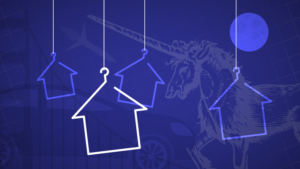https://www.housingwire.com/articles/drone-mapping-in-the-real-estate-industry/

Year to year, the evolution of computer technology can be staggering. In most cases, the advancements cause disruption— and opportunity—in every industry. In real estate, one such disruption is caused by drones, which have become an extremely effective tool for mapping and marketing property.
Drone mapping is replacing manned aerial flyovers such as Google Earth, a technology the industry has relied on for decades. More than taking pictures, videos, and plotting property boundaries on a map, drone mapping provides buyers and sellers with low-cost, high-resolution, and frequently updated imagery.
Drone Mapping
Drones autonomously capture multiple overlapping images that are georeferenced and stitched together to create an orthomosaic. The orthomosaic is used just like any other layer in a GIS to serve as an accurate, high-resolution, updated aerial basemap.
Data such as boundary lines, trails, flood zones, topographic contours etc. can be laid on top of the drone imagery for mapping. Informative data such as deer stands, utilities, hog damage etc. can also be collected and plotted.
Many photogrammetric softwares are available for drone mapping, such as Pix4D, DroneDeploy. Each software has its pros and cons, but all generate more than just imagery. A standard DJI drone and camera alone can create 3D meshes, digital elevation models, and measure plant health (via VARI algorithm). The data outputs can be used to generate topographic contours, identify troubled areas in agricultural fields, or even help determine the best location to build a home or cabin.
A small, helpful practice is adding the property boundaries and descriptive text on the drone photos. Software such as Photoshop or GIMP (a free open-source alternative) can aid with editing the raster photos themselves and adding vector boundaries and text.
Although drone mapping can assist marketing efforts and helps buyers make informed decisions, it is not ideal for all properties. Properties that are too large or densely forested can cause delays in image processing or increase overall cost.
Drone Pilot Certification
The greatest benefit of being a certified drone pilot is being able to fly as you are showing properties to potential buyers. It is even possible to sell properties to buyers who have never walked the property, but who have watched the live feed of an airborne drone on a tablet.
An FAA Part 107 certification is highly recommended. Many local and online schools offer preparation for the 60-question test. Drone Launch Academy online offers a pass guarantee or your money back.
Occasionally, you will need to coordinate with the airport before you fly, so it is always a clever idea to plan your flights ahead of time, although most rural properties are not near airports or restricted airspaces.
Bottom Line
Modern drone technology is an excellent mapping tool that helps agents close deals more quickly. There are an exponential number of supplementary applications that provide a myriad of benefits to those in the broker space. When all is said and done, drone mapping is a must-have for every listing in the brokerage business.
















